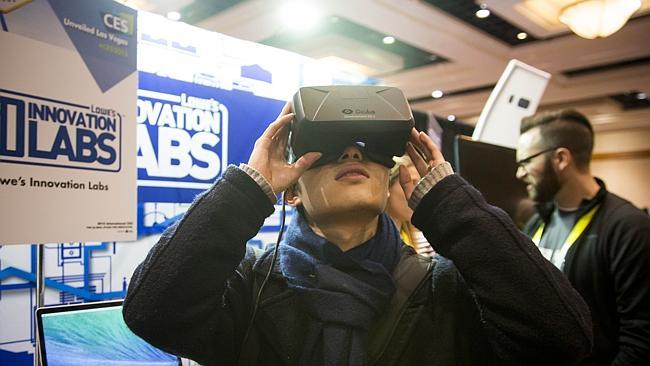Tech companies starting to get real about virtual reality
YOU know that dream of strapping on a pair of goggles and suddenly being immersed in a 3-D fantasy world?

YOU know that dream of strapping on a pair of goggles and suddenly being immersed in a 3-D fantasy world? Sure, virtual reality has been kicked around for decades (and can be blamed for some awful movies), but it’s finally closer to being a consumer reality.
Innovators working on virtual reality say advancements this year will set up the technology for meaningful consumer traction as early as next year.
That’s why a range of companies as diverse as Razer , with its cult status among PC gamers, and Samsung Electronics have come to the Consumer Electronics Show in Las Vegas this week with products they hope will ultimately make VR as common as Netflix.
“We think VR is still in its infancy,” Razer chief executive Min-Liang Tan said.
At CES, Mr Tan is introducing two VR-related efforts. The first is a software platform called OSVR — open-source virtual reality — that aims to make it easier for VR headsets to work with games and other content. The other is an OSVR headset that Razer will sell on its website for about $US200 ($247).
As an open-source project, anyone can download and make changes to the VR software. OSVR is what developers call an abstraction layer, meant to translate directions from an app or game to make it compatible with other platforms, in this case for VR headsets.
To put it another way: If a gamer is running through a jungle hunting evil aliens, the headset’s motion sensors need to tell the software — and the console, phone or computer the headset is hooked up to — which direction the gamer is looking.
Razer has signed up major companies such as the video game publisher Ubisoft and the hardware maker Leap Motion, whose devices control apps and games through hand gestures, to support OSVR’s development.
Gearbox Software, which makes the popular Xbox and PlayStation shooter series Borderlands, is among the supporters. “The challenge of virtual reality for developers like myself is that we don’t want to have to write custom software for each headset that’s out there,” Gearbox chief executive Randy Pitchford said. “We need that layer between our software and this new hardware paradigm and that’s what Razer is trying to create.”
Razer is known primarily for its Windows gaming laptops, keyboards and mice, which are favourites among hard-core PC gamers. The company had credibility with both gamers and developers, which would help it evangelise OSVR, Mr Pitchford said.
“We’re at a weird time with VR,” he said. “We have the technology to finally do meaningful VR but we don’t truly have a viable consumer product that people are buying.”
Last year, Facebook made a $US2 billion bet the Oculus Rift could be the headset that brought virtual reality into the mainstream. But Oculus hasn’t yet shipped a product for consumers. Like Razer and Samsung, it sells a “development kit.” (The Oculus is pricier than the competition, at $US350.)
Sony also has shown a prototype VR headset called Project Morpheus that connects to its PlayStation 4 video game console, but so far hasn’t announced plans for a sale.
Like Razer, Samsung knows VR headsets will need more and better content to get consumers to buy in. It is taking a different approach.
On Monday, Samsung introduced Milk VR, a 360-degree video-streaming service built for its Gear VR headset, which is powered by Oculus technology. While Razer is going open-source to help foster VR development, Samsung is so far keeping Milk VR to itself. The service is available only on the Galaxy Note 4 smartphone, which the Gear VR headset uses exclusively as its display.
Other companies are trying to spark the VR market by letting consumers create their own experiences with 360-degree cameras.
But no company has completely cleared a significant hurdle standing in the way of VR: motion sickness.
“Every time VR was about to take off, it’s crashed on the rocks,” said Patrick Moorhead, president and chief analyst at Moor Insights and Strategy.
“Motion sickness is a big part of that.” A chief reason is that when people in VR environments move their heads, even a slight delay in registering the change to what people “see” can be unsettling. Mr Moorhead expects the optics to get better this year thanks to improved frame-rates and lower latency.
Cost is another inhibitor, said Roger Kay, president of research firm Endpoint Technologies. Headsets from Samsung and Razer sell for about $US200. It was a decent price, he said, but too high given how little content there was for VR headsets right now.


